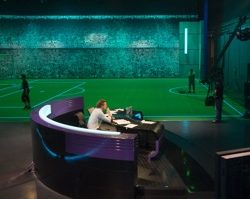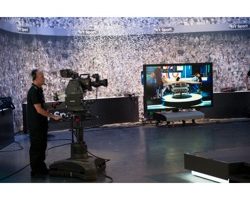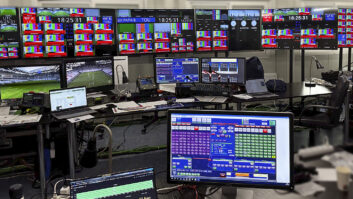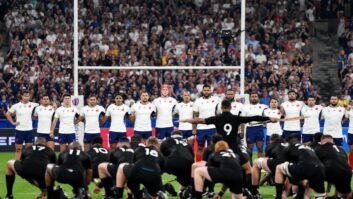Host Broadcasting Services’ (HBS) production of June’s FIFA World Cup promises a number of innovations, the most prominent of which is origination for all 64 matches on HD-SDI 1080i/50: but at the heart of the IBC in Munich will be a 50Tb media server capable of storing all 1,600 hours of tournament action, writes Adrian Pennington.
Broadcasters can flesh out their programming by accessing all archived content, which for the first time will be fully indexed for browse and retrieval. Requested media will be available by IMX file transfer – also a first. In addition the media server features a ‘near live’ clips compilation containing the best actions from isolated replay feeds available for editing as little as 10 minutes after taking place.
“This is a big innovation for us,” said HBS CEO Francis Tellier. “It will be the first time users can access browse and playback from the entire content database. It will enable broadcasters to enhance the quality of their production.”
The concept was validated at the FIFA Confederations Cup in Germany last June where HBS worked closely with EVS to develop logging and workflow procedures for the system.
According to Olivier Saint Marc, HBS super feed production manager, “We needed a set of search criteria which was rapid but comprehensible. For example an editor can input a combination of keywords like ‘Beckham, penalty shootout, referee’ and from the list of available clips they can view a low-resolution version. They can mark in and out points with timecode and begin to build an analysis or highlights package while the game is in progress. They can then select the media for playout or further editing.”
Based around a cluster of 18 EVS XT2s and managed by EVS’ IP Director logging and browsing software, the server features 18 live SDI inputs with four channels of audio per video. Eight feeds produced on-site will be ingested and logged ready for access shortly after the final whistle.
Contributions include the Extended Stadium Feed (ESF) and Clean Stadium Feed as well as five super feeds including a ‘tactical’ aerial view, two ‘team’ feeds which focus on the warm-up, fans and management bench and two ‘player cams’ trained on three players a side for 15-minute periods. The compilation channel, which comprises relevant angles and slo-motion material most of which will not have been covered in the ESF, is clipped in the OB by an operator with access to the recorded material on ten HD XT2 six channel servers, networked by Xfile. The clips are encoded using Telestream’s Flipfactory and streamed to the IBC for indexing.
“Usually there’s only time to replay three or four camera angles per incident during the game,” says Saint Marc. “The clips channel will enable production teams to produce analysis from different points of view and multiple highlights packages much more efficiently, without having to log all the action themselves.”
The ESF will be technically available in widescreen HD and SD at the venue and the IBC. All super feeds will be available in SD with standard delivery as widescreen SDI 625/50. Broadcasters can also exchange media with each other via the server although it will store, manage and playout SDI only.
“We’re already pushing the limits of the technology,” explains Tellier. “HD would require too much capacity, although by 2010 a totally HD solution should be possible.”
A fully HD production has been gradually building since HBS’ production of Korea/Japan 2002 where 48 matches were shot in the format. According to Tellier, “in 2002 there were two parallel productions – 20 cameras shooting SD with eight in HD. The style of the HD broadcast (directed by the Japanese hosts) lacked the regular cutting with which football viewers are familiar. Broadcasters had to choose between image quality and boring direction or a more lively style without enjoying the quality.”
This time 25 Grass Valley LDK 6000 mk II HD cameras will be deployed per match alongside four SD super-slomo units. Premiere, NHK and Fox Sports are broadcasting a full HD service.
Interestingly Tellier reports that the production budget has reduced from £88m in 2002 to £75m. “The difference is due to the number of countries and number of stadiums (from 20 to12), so the cost impact of HD is secondary.” An accumulated audience of 32 billion is expected to tune in to Germany 2006.





